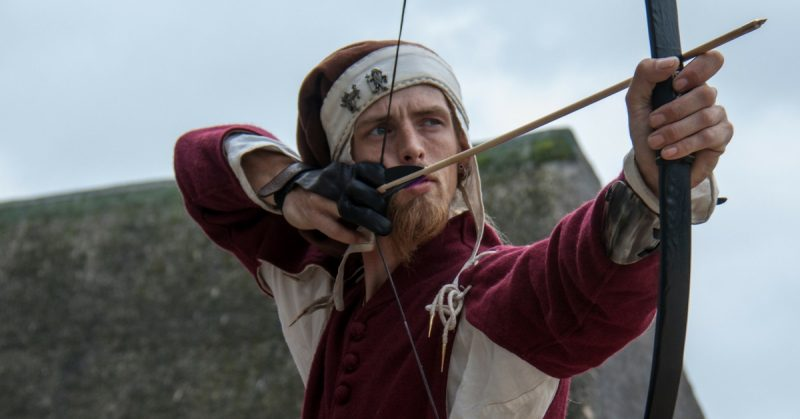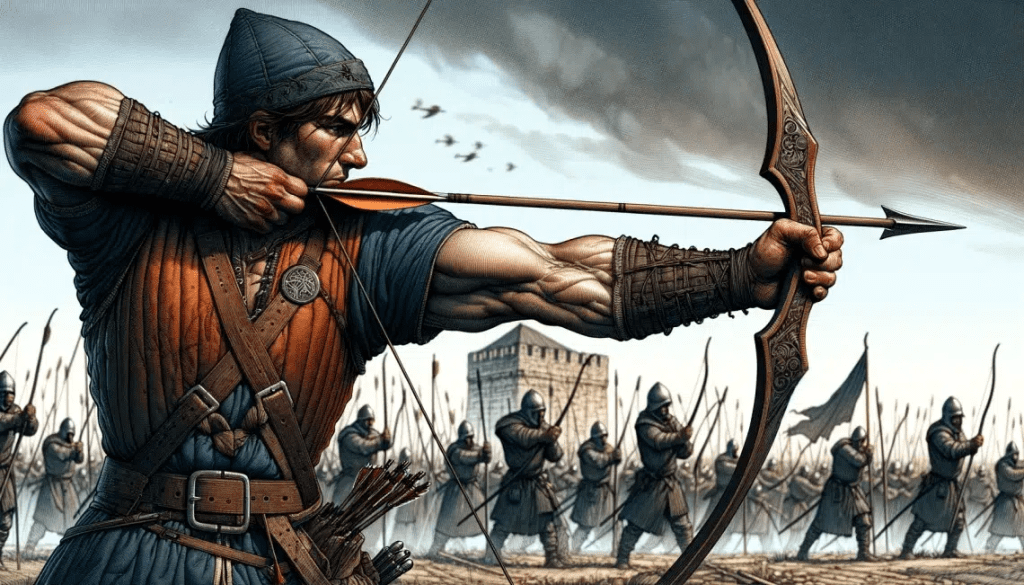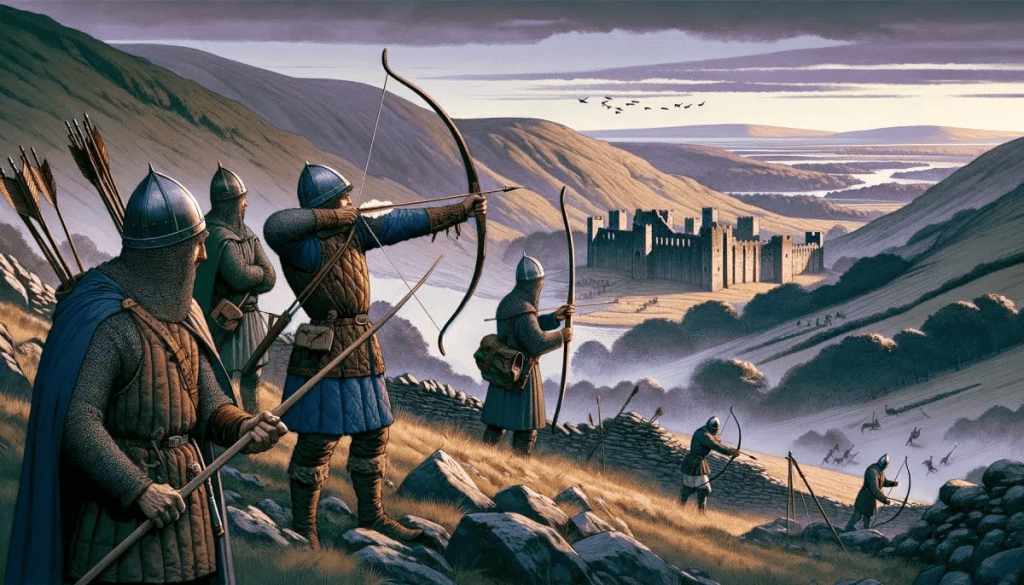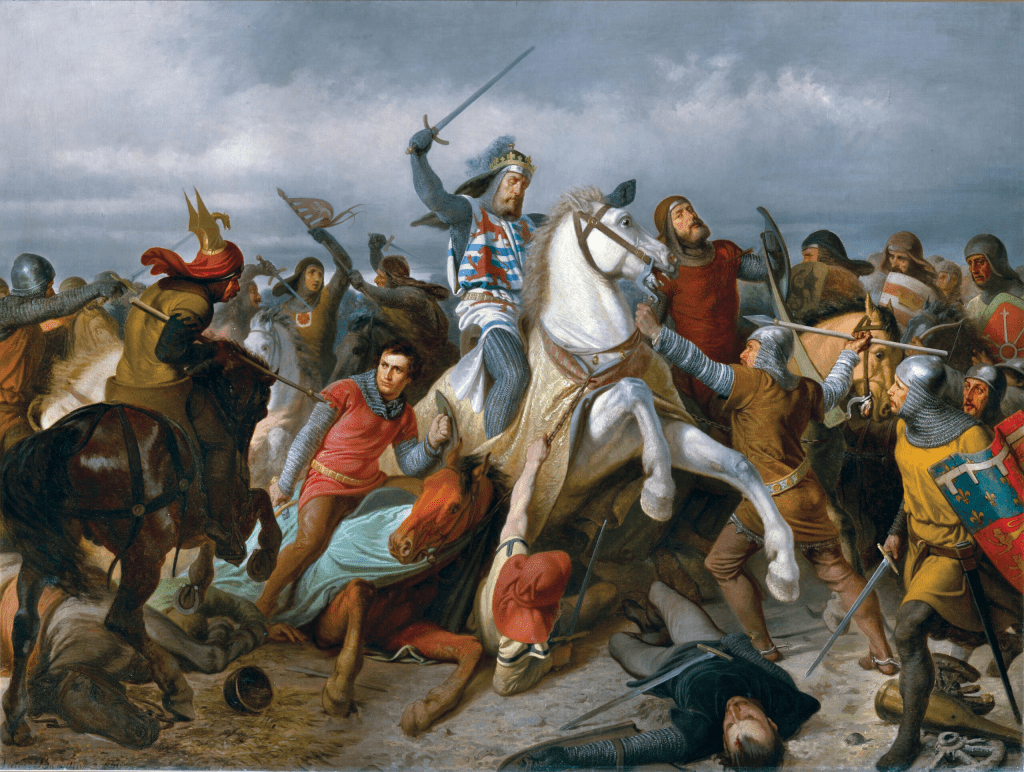In the summer of 1346, on a battlefield near the French village of Crécy, a thunderous clash of armies unfolded. On one side stood the heavily armored might of France 20,000 knights and men-at-arms on horseback, symbols of medieval military power. On the other side, just 7,000 English longbowmen, humble soldiers equipped not with swords or spears, but with bows of yew wood and a deadly rain of arrows.
The outcome of the Battle of Crécy would shake the foundations of warfare in Europe. Against all odds, the English force, led by King Edward III, crushed the French army. And the reason was clear: the longbow. In one afternoon, this simple yet powerful weapon shattered centuries of battlefield tradition and ushered in a new era of military strategy.

A Clash of Eras: Knights vs. Archers
The Battle of Crécy took place during the Hundred Years’ War, a prolonged conflict between England and France over claims to the French throne. At the time, traditional European warfare was dominated by the aristocratic knight armored in steel, mounted on a powerful warhorse, and revered as the elite warrior of the age.

But England’s army came prepared with a very different approach. The longbow, a six-foot-tall bow made from yew wood, had been perfected in Wales and adopted by English forces. It could shoot arrows over 250 yards with enough force to pierce plate armor. More importantly, longbowmen could fire up to 12 arrows per minute far more rapidly than any crossbow or thrown weapon of the time.
The English dug into a strong defensive position and placed their longbowmen on the flanks, ready to unleash volleys upon the advancing enemy. What followed was a slaughter.
Video:
How the Medieval Longbow Cut Down a French Army in 1346
The Power of the Longbow
As the French knights charged in wave after wave, English longbowmen loosed tens of thousands of arrows. Horses were struck down mid-gallop. Knights fell from their saddles, their armor punctured or their visors pierced. The field turned into chaos as French troops struggled to advance through mud, flying arrows, and the bodies of fallen comrades.
The numbers speak for themselves: while English casualties were light, the French lost thousands of knights, nobles, and soldiers. Among the dead were high-ranking lords, counts, and even the blind King John of Bohemia, who had charged into battle guided by his retainers.

It was a devastating defeat for France and a massive victory for England. But beyond the immediate outcome, the real legacy of Crécy was what it revealed: that mobility, skill, and tactics could overcome brute force and armor.
The End of the Knight’s Dominance
Before Crécy, the knight was considered nearly invincible. After Crécy, that myth began to unravel. The idea that a peasant with a bow could bring down a nobleman on horseback was revolutionary. The battle showed that warfare was evolving no longer just a contest of courage and strength, but a calculated game of positioning, range, and coordination.
Video:
Battle of Crecy, 1346 – Legend of the Black Prince is born – Hundred Years’ War DOCUMENTAR
This shift would continue with later battles like Agincourt and Poitiers, where the English longbow again proved dominant. Over time, it led to the decline of the feudal knight and the rise of professional standing armies, paving the way for modern military tactics.
A Turning Point in Military History
The Battle of Crécy was more than just a victory it was a turning point. It marked the dawn of projectile warfare, the end of chivalric dominance on the battlefield, and a rethinking of how armies were trained, equipped, and deployed. England’s archers weren’t just effective they were symbolic of a changing world where warfare was no longer just about nobility, but about strategy, innovation, and the skilled common soldier.
Today, Crécy is remembered not only for its dramatic imbalance of forces but for the profound military lessons it taught. In the age of armor and honor, it was the quiet pull of a bowstring that changed everything.



